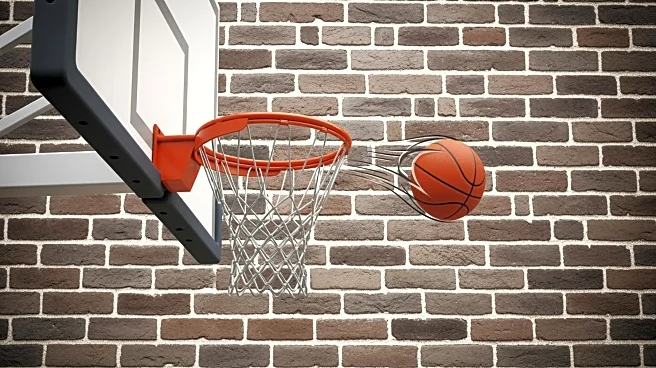What's Happening?
The Chicago Bulls concluded their preseason with a 3-2 record, showcasing both strengths and weaknesses in their gameplay. The team excelled in scoring within the paint, averaging 58.4 points per game, ranking second overall in the preseason. Their ability
to finish strong at the rim was highlighted by a 75% shooting accuracy in the restricted area. However, the Bulls struggled with perimeter shooting, managing only 30.4% from three-point range, which placed them 26th in the league. Defensively, the Bulls faced challenges, allowing opponents to score an average of 120 points per game, resulting in a Defensive Rating of 111.9. The team also struggled to defend the paint effectively, allowing 50.8 points inside per game, ranking them 24th in this category.
Why It's Important?
The preseason performance of the Chicago Bulls provides insights into areas that need improvement as they transition into the regular season. Their strong scoring in the paint suggests potential for offensive dominance, but their poor perimeter shooting and defensive struggles could hinder their success. Addressing these issues is crucial for the Bulls to compete effectively in the regular season. The team's ability to adapt and improve their defense, particularly against three-point shots, will be vital in determining their overall performance and standing in the league.
What's Next?
As the Bulls move into the regular season, they will need to focus on improving their perimeter shooting and defensive strategies. Key areas for improvement include defending above-the-break threes and reducing the volume of shots allowed in the restricted area. The coaching staff may implement new defensive schemes and emphasize perimeter shooting in practice sessions. Monitoring these adjustments will be essential to gauge the team's progress and potential for success in the upcoming season.
Beyond the Headlines
The Bulls' preseason performance highlights broader implications for their strategy and player development. The emphasis on scoring in the paint could lead to a more aggressive offensive approach, while defensive adjustments may require changes in player roles and responsibilities. The team's ability to adapt to these challenges will be crucial in shaping their identity and competitiveness in the league.

















